Robots will soon be folding your laundry—but will they really?
Do we all hate folding laundry this much?
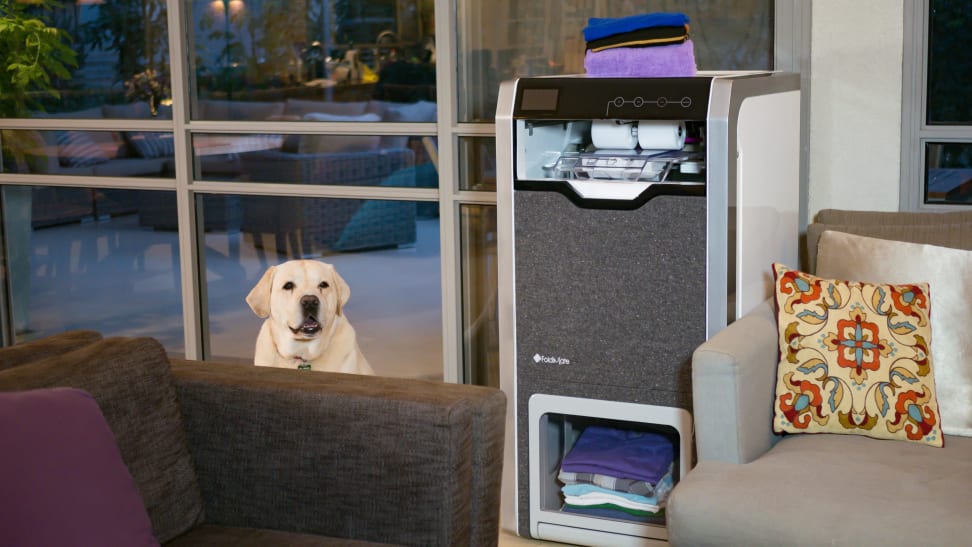 Credit:
Foldimate
Credit:
Foldimate
Products are chosen independently by our editors. Purchases made through our links may earn us a commission.
When I heard that not one, but two laundry-folding robots would be on display at the CES tech show in Las Vegas, I initially ignored them. After all, I assumed they were vaporware.
Foldimate, whose consumer-focused robot is expected to sell for $980, only had a mockup on display, and customers who order now won’t get their robot until late 2019. And, although the $16,000 (!) Laundroid actually folded clothes on the show floor, the refrigerator-sized device was big enough that, theoretically, a human could’ve been inside doing all the work.
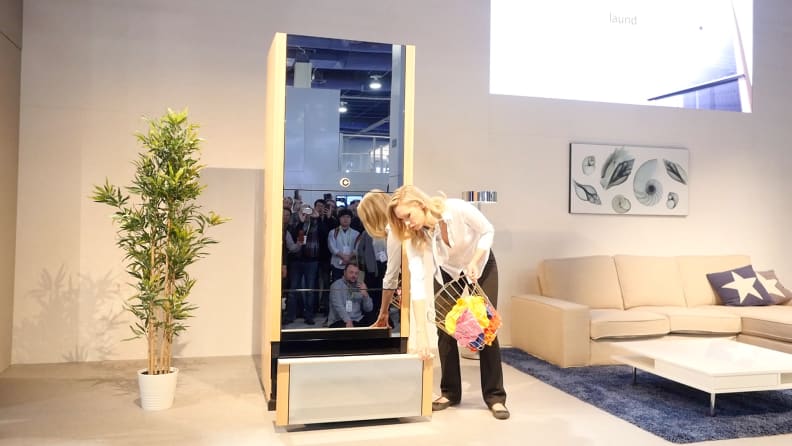
A demonstration of the $16,000 Laundroid folding robot at CES 2018 in Las Vegas.
But after spending some time under the hood and cutting through the carefully scripted PR pitches, I’m less skeptical. It’s not that robots will never be folding your laundry. Just, judging by the prototypes I saw, they’ll probably be doing it in hotels and factories first.
My conversion was all thanks to a stroke of bad luck for Laundroid: A botched on-camera demo. An inside-out shirt confused the machine, and it never produced its promised pile of neatly folded laundry.
To make up for the failure, Laundroid’s creator, Dr. Shin Sakane, agreed to give me a behind-the-scenes look. (Photos and questions about proprietary details were forbidden. Apparently, the laundry robotics game is cutthroat.)
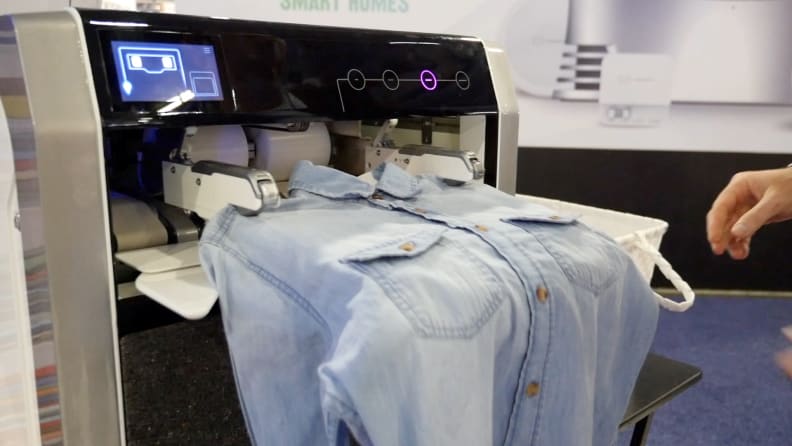
The Foldimate requires users to manually load laundry one at a time.
Although a ton of humans were troubleshooting the machine, none of them were folding laundry. Instead, that work was left to wires, robot arms, clips, and tons of circuit boards.
No, Laundroid can’t fold as quickly as a human. But folding laundry is really hard. Before it can even start folding, Laundroid’s artificial intelligence software must recognize an item of clothing, figure out where the machine’s robotic arms can pick it up, and determine whether it’s inside-out. And then it has to figure out how to fit it in a neat, uniform pile.
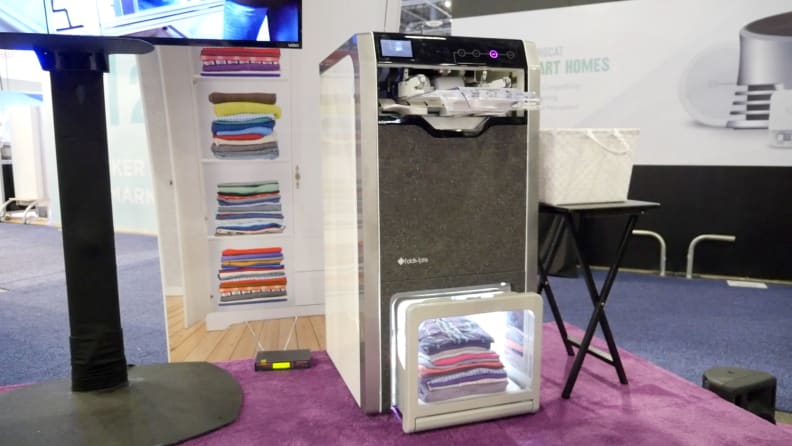
A prototype of the Foldimate on display at CES 2018 in Las Vegas
Even though both companies insist that they’re interested in consumer technology, I just can’t picture either one in a home.
They’re expensive, bulky, and can't fold some items as fast as a human. You could hire a part-time laundry service for the cost of a Laundroid, and neither one can button an Oxford shirt. The Foldimate can’t do complex items like underwear, and it can only batch-load three or four items at a time.
But in a hospital or a hotel, folding towel after towel? That’s some serious labor savings. Same goes for the shipping department of a clothing factory, or a massive mail-order retailer.
That’s probably why Panasonic invested $60 million in Laundroid. BSH, the global appliance company that owns Bosch, has expressed interest in partnering with Foldimate.
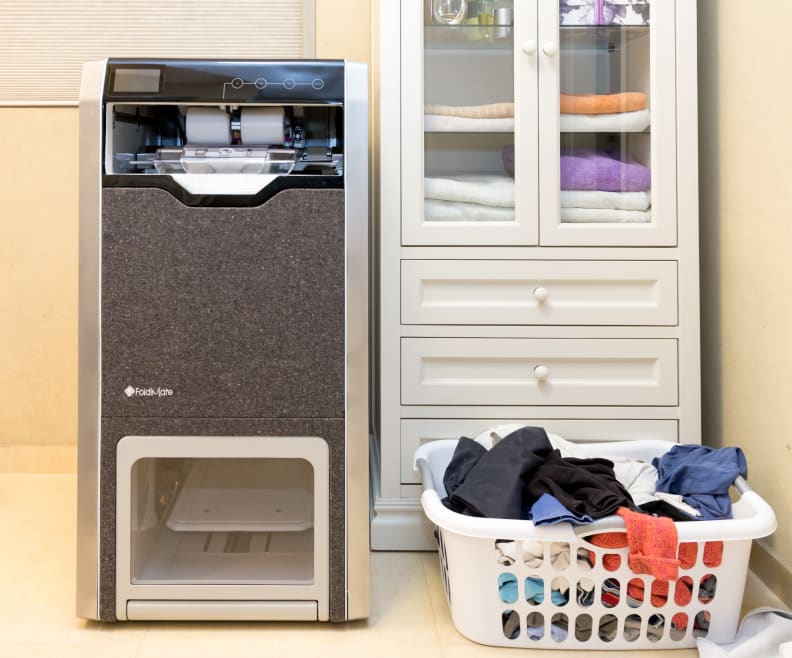
The Foldimate in a laundry room.
And you can probably imagine what kinds of companies want to get their hands on Sakane’s software, never mind the robotics component. After all, if a robot can learn how to fold laundry, it can probably be trained to do more useful things.
Sure, a few wealthy customers might plunk down $1,000 for Foldimate’s at-home machine. Laundroid even has a café in Japan where customers can have their laundry folded while they sip coffee and dine on roasted cauliflower. It gets good reviews, too.
But I predict the majority of customers for these products will be businesses. So, yes, a robot may end up folding your laundry in the future. But if it takes place in a faraway warehouse or in the basement of a hospital somewhere, you probably won’t know about it.
